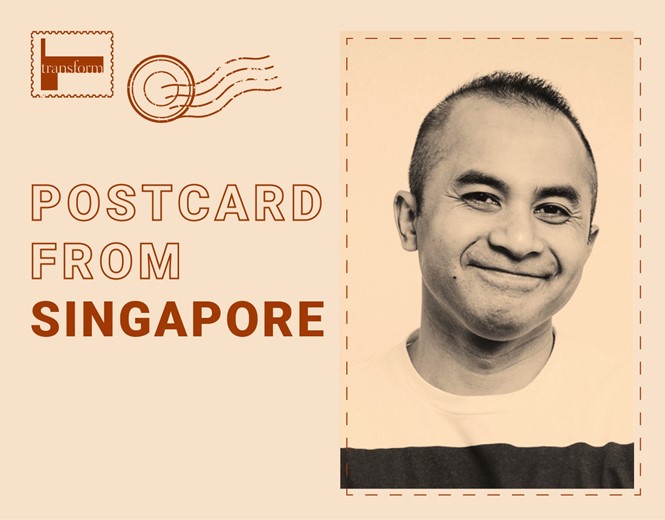Postcard from Singapore

Mohammad Fauzi, group creative director of brand agency Sedgwick Richardson, speaks to Transform magazine about the branding landscape in Singapore, from how differs from that of other countries in Asia where Sedgwick Richardson operates, what challenges can be faced when competing against other Asian Tigers and the kind of branding macro-trends that exist in Asia.
How much of your work with brands is informed by Singapore’s history, culture and lifestyle?
The Singapore values of pragmatism and performance define how we approach branding challenges. Of course you can’t ignore societal relevance, that will always have a part to play when it comes to brand building.
What is distinctive about the branding in Singapore?
Singapore is among the world’s most racially diverse societies, our local audience is not homogeneous meaning brands have to connect across cultures. This in itself adds another layer of complexity and also poses an interesting challenge.
How does it differ from that of other countries in Asia where Sedgwick Richardson operates?
The landscape has changed. Singapore was known for law and order, squeaky clean, safe, speed, efficiency and all the hardware stuff. We needed more than that. The city’s lacking ‘soul’. Efforts have been made over the years to address this as such more spaces are created to allow for greater creative expressions, the importance of design thinking, innovation, shifting the focus to allow people to chase whatever their dreams and aspirations may be. Singapore is more advanced and exposed/open to influences around the world compared to the other cities we operate in and we are not constrained by dual/multiple languages. We are now a diverse melting pot of cultures and races, epitomising the beauty of multiculturalism.
In what ways do the projects Sedgwick Richardson works on differ from those in Europe?
The need to educate clients on what branding means. There is no word for ‘branding’ in Burmese, for example.. and not getting paid as much as those in Europe!
What kind of branding macro-trends exist in Asia?
The idea of purpose becoming increasing prevalent, we’re all conscious consumers and more people are looking to align themselves with brands and causes that really matter. The rise of experiences and meaningful interactions with brands beyond just the physical product. The importance of wellness, with customers proactively embracing nutrition, mindfulness, fitness, and personal health care, turning health and wellness into a truly holistic way of life. This in turn can influence their connection with ‘Purpose’. The rise of digital, with pandemic accelerating and pushing brands to reimagine how technology and digital channels can be leveraged to engage with consumers and accommodate behavioural changes.The focus on sustainability with the need for companies to address how they operate in the ecological, social and economic environment in creating long-term value.
What are the challenges when competing against other Asian Tigers?
This is an old term now. The Four Asian Tigers are the high-growth economies of Hong Kong, Singapore, South Korea, and Taiwan. Singapore's macro-economic growth strategy is predicated on being a hub and a host for the Southeast Asian / Asia Pacific region. Against South Korea and Taiwan, Singapore may face challenges in terms of the manufacturing sector. Against Hong Kong, the challenges are more in the financial services sector.Singapore's economy has been ranked the most free in the world this year in The Heritage Foundation's 2021 Index of Economic Freedom, the second year in a row it topped the list. Hong Kong, which had topped the list for 25 of the last 26 years, was left out of this year's index.
What are the most important points to consider when tackling a brand localization project?
In no particular order, Culture. Language. Trends. Consumer behaviours. Politics. Religion. Fengshui…the laundry list goes on. I came across a project in Vietnam where the colour was chosen based on the personal horoscope of the chairman! For me, it’s interesting how the meaning of branding differs across the region. For the more developed markets it is a source of differentiation and competitive advantage. In the region's more emerging or frontier markets, it's as simple as looking credible.












